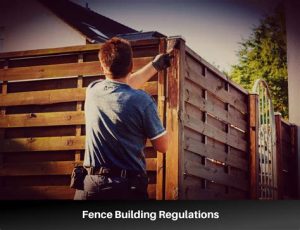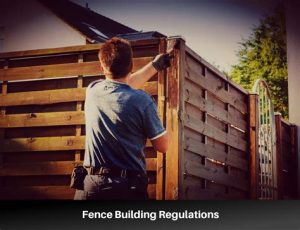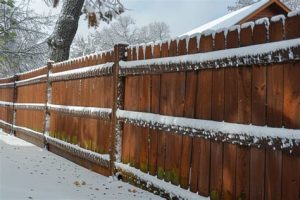Explore essential guidelines for fence installation permits, including local regulations, requirements, costs, and the risks of proceeding without proper authorization.Installing a fence can enhance your property’s privacy, security, and curb appeal, but before you start digging post holes, it’s crucial to understand the legal landscape surrounding fence installation. Many homeowners overlook the necessity of permits, believing that as long as they’re on their own property, they can install a fence without any red tape. However, local regulations can vary significantly, and failing to comply could lead to costly consequences. This blog post will guide you through the essentials of understanding local regulations, the specific permit requirements for fences, the process of obtaining these permits, associated costs and fees, and the potential pitfalls of installing a fence without the necessary approvals. By the end, you’ll be well-equipped to make informed decisions about your fencing project and avoid any unexpected legal troubles.
Understanding local regulations
When it comes to installing a fence, one of the most crucial aspects to consider is the local regulations that govern such projects. These regulations may vary significantly from one municipality to another, making it essential for homeowners to familiarize themselves with their specific location’s rules before proceeding with installation.
Local regulations can dictate several factors, including the height, materials, and design of your fence. For instance, some areas may have restrictions on the type of materials used, favoring natural wood over vinyl or metal, or have limitations on how high a fence can be built to ensure it doesn’t obstruct views or sunlight for neighboring properties.
Additionally, zoning laws and setback requirements might influence where you can place your fence on your property. These laws are designed to maintain aesthetic harmony and safety within neighborhoods. Therefore, it is advisable to contact your city or county planning office or check their website to obtain detailed information about your local regulations before starting your fence installation project.
Permit requirements for fence installation
When considering installing a fence, it’s essential to understand the permit requirements that often accompany such projects. Each city or municipality has its own set of regulations governing what types of fences can be built, where they can be placed, and whether a permit is necessary. Generally, the height, materials, and the location of the fence are significant factors influencing the need for a permit.
In many areas, a permit is required for fences exceeding a specific height, usually around six feet. Additionally, if the fence is planned to be constructed on or near property lines, securing a permit ensures that you remain compliant with local zoning laws. It’s important to check with your local zoning office or building department for specific requirements, as failing to do so may lead to unnecessary complications.
Some zones may have restrictions on the type of materials used for fencing, especially in historically significant areas or neighborhoods with strict homeowners’ association rules. Therefore, before proceeding with your project, consult the local regulations to determine the permit process and ensure that your planned installation complies with all requirements.
Process of obtaining a permit
Obtaining a permit for fence installation can seem daunting, but breaking down the process into clear steps can make it more manageable. The first step generally involves checking with your local government or zoning office to understand the specific regulations regarding fence installation in your area. These regulations can vary significantly, so it’s important to ensure you’re following your area’s guidelines.
After confirming the relevant regulations, the next step is to fill out the required application for the permit. This application usually requires details such as the type of fence you plan to install, its height, and its location on your property. Some jurisdictions may also require a site plan that illustrates where the fence will be located in relation to your property lines and existing structures. Be sure to gather all necessary information to avoid delays in the approval process.
Once you’ve submitted your application, there may be a waiting period during which the local authorities will review the proposal. In some cases, you might also need to attend a public hearing where neighbors can express their opinions about your planned fence installation. After the review, if your permit is approved, you’ll receive documentation that allows you to begin installation. Always keep your permit on hand during installation, as it may need to be displayed for inspections or inquiries by local officials.
Costs and fees associated with permits
When considering the installation of a fence, it’s crucial to understand the costs and fees associated with obtaining the necessary permits. Many homeowners underestimate these expenses, thinking that the cost of the permit will be minimal, but there are various factors that can increase the total expenditure.
- Location: Different municipalities have different fee schedules.
- Height and Type of Fence: More complex or taller fences may incur higher costs.
- Application Fees: There may be a standard application fee that is non-refundable, even if the permit is denied.
In addition to the initial permit fees, there may be other charges related to inspections or additional documentation required by your local authorities. It’s advisable to check with your local zoning office for a comprehensive fee schedule to ensure you’re aware of all potential costs associated with the fence installation permit process.
Consequences of installing without a permit
Installing a fence without obtaining the necessary permit can lead to a range of serious consequences. Firstly, many local governments have regulations in place that mandate fence installations be approved and inspected. Failing to comply with these regulations can result in enforcement actions, including fines and the requirement to remove the fence.
Additionally, if a neighbor or local authority reports your unpermitted fence, you could face legal action. This scenario not only creates tension with neighbors, but it can also lead to costly legal fees if a court case is initiated. Even if you feel confident about your installation, there’s always a risk of disputes arising from property disputes or boundary issues.
Moreover, in some regions, the municipality may require you to restore the property to its original state, leading to additional expenses. If the fence poses any hazards or violates safety standards, the costs associated with removing or repairing the fence could escalate quickly. Therefore, it’s essential to always be aware of local regulations and ensure that you obtain all required permits before starting your fencing project.
Frequently Asked Questions
What are the common reasons for needing a permit to install a fence?
Permits are often required to ensure that fences comply with local zoning laws, property lines, and building codes. They also help prevent disputes between neighbors.
How can I find out if I need a permit for my fence installation?
You can check with your local building authority or municipal office, as they typically have guidelines on fence regulations and permitting requirements.
Are there any specific types of fences that usually require a permit?
Yes, certain types of fences, such as those that exceed a specific height, are made of materials that may require special considerations, or are installed in specific zones may require a permit.
What are the potential consequences of installing a fence without a permit?
Consequences can include fines, being required to remove the fence, or legal disputes with neighbors if the fence does not comply with local regulations.
Is the process of obtaining a permit for a fence installation complicated?
The complexity can vary by location, but generally it involves filling out an application, paying a fee, and possibly getting approval from a homeowner’s association or neighbors.
Can I appeal a permit denial if my application is rejected?
Yes, most jurisdictions offer an appeals process where you can contest the denial and present your case, which may involve a hearing or application for variance.
Are there any alternatives to obtaining a permit for installing a fence?
Some homeowners opt for lower fences or temporary fencing that may not require permits. It’s important to verify this with local regulations before proceeding.




